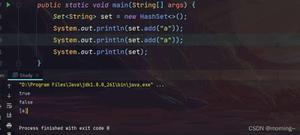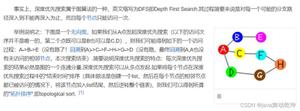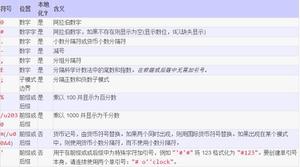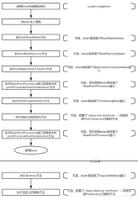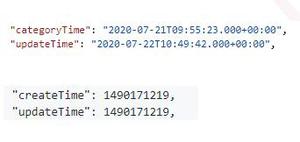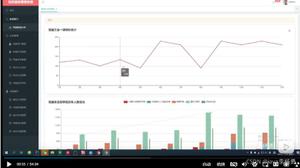JavaScript引用类型RegExp基本用法详解
本文实例讲述了JavaScript引用类型RegExp基本用法。分享给大家供大家参考,具体如下:
1、正则表达式定义
三个标志:全局模式g,不区分大小写模式i,多行模式m。
1) 字面量定义
var pattern = /[fe]at/gim;
2) 构造函数定义:
接收两个参数——要匹配的字符串模式和可选的模式字符串(g,i,m)。
var pattern = new RegExp("[fe]at","gim");
注意:
1) 若需要匹配的字符串中包含以下元字符,就必须对它们进行转义:( [ { \ ^ & | ) ? * + . ] } 。
2) 由于构造函数定义正则表达式的参数是字符串,所以在某些情况下要对字符时行双重转义如\n,字符\在字符串中通常被转义为\\,而在正则表达式字符串参数中就会变成\\\\,字面量模式/\w\\hello\\123/等价的字符串为“\\w\\\\hello\\\\123”。
2、RegExp实例属性
- 1) global 表示是否设置了g标志。
- 2) ignoreCase 表示是否设置了i标志。
- 3) multiline 表示是否设置了m标志。
- 4) lastIndex 用于记录上一次匹配结束的位置,即下一次开始搜索下一个匹配项的位置,从0算起。
- 5) Source返回正则表达式的字符串表示,按照字面量模式返回而非传入构造函数的字符串模式返回。
var pattern = new RegExp("\\[fe\\]at","i");
alert(pattern.source);
以上代码返回\[fe\]at
3、RegExp实例方法
1) 继承的toLocaleString()、toString()、valueOf()方法
toLocaleString():返回正则表达式的字面量,与创建正则表达式的方式无关。
toString():返回正则表达式的字面量,与创建正则表达式的方式无关。
valueOf():返回正则表达式本身。
var pattern1 = /\[fe\]at/i);
var pattern2 = new RegExp("\\[fe\\]at","i");
alert(pattern1.toString()); // /\[fe\]at/i
alert(pattern1.toLocaleString()); // /\[fe\]at/i
alert(pattern2.toString()); // /\[fe\]at/i
alert(pattern2.toLocaleString()); // /\[fe\]at/i
2) match()方法
参数:用于匹配的正则表达式。
返回值:区分match()的返回值主要是看是否设置g标志,没有设置g标志时与exec()是等价的。
a. 如果设置g标志,那么返回的是包含所有匹配项的数组。
b. 如果没有设置g标志,那么返回的是包含第一个匹配项的数组,第0项是与整个正则表达式匹配的字符串,第1项是是与第1个子表达式相匹配的文本(如果有的话),第2项是与第2个子表达式相匹配的文本(如果有的话)。
3) exec()方法
参数:要应用模式的字符串。
返回值:返回包含第一个匹配项信息的数组,没有匹配项的情况下返回null。exec()的返回值不受g标志影响,在不设置g标志时,在同一个字符串上多次调用exec()将会始终返回第一个匹配项的信息。即使设置了g标志,一次也只返回一个匹配项,但设置g标志时,每次调用exec()都会在字符串中继续查找新匹配项,会驱动lastIndex可以模拟遍历所有匹配,可以与match()设置g标志时等价(区别在于遍历所有匹配时,exec()需要多次匹配,match()一次匹配即可得到所有匹配)。
返回的数组包含额外的两个属性:index和input。其中,index表示匹配项在字符串中的位置,而input表示应用正则表达式的字符串。在数组中,第0项是与整个正则表达式匹配的字符串,第1项是是与第1个子表达式相匹配的文本(如果有的话),第2项是与第2个子表达式相匹配的文本(如果有的话)。
var str = "Shanghai and Beijing and Guangzhou";
var pattern = /Shanghai ( and Beijing ( and Guangzhou)?)?/gi;
var match = pattern.exec(str);
alert(match.index);//0
alert(match.input);//"Shanghai and Beijing and Guangzhou"
alert(match[0]);//"Shanghai and Beijing and Guangzhou"
alert(match[1]);//"and Beijing and Guangzhou"
alert(match[2]);//"and Guangzhou"
在不设置g标志的情况下,同一个字符串上调用exec()始终返回第一个匹配项的信息。
var str = "fat eat";
var pattern = /.at/;
var match = pattern.exec(str);
alert(match.index);//0
alert(match.input);//fat eat
alert(match[0]);//fat
alert(pattern.lastIndex);//0
var match = pattern.exec(str);
alert(match.index);//0
alert(match.input);//fat eat
alert(match[0]);//fat
alert(pattern.lastIndex);//0
设置全局标志g情况下,同一个字符串上调用exec()每次会返回一个新的匹配项的信息。
var str = "fat eat";
var pattern = /.at/g;
var match = pattern.exec(str);
alert(match.index);//0
alert(match.input);//fat eat
alert(match[0]);//fat
alert(pattern.lastIndex);//3
var match = pattern.exec(str);
alert(match.index);//4
alert(match.input);//fat eat
alert(match[0]);//eat
alert(pattern.lastIndex);//7
4) test()方法
参数:要应用模式的字符串
返回值:在模式与该参数匹配的情况下返回true,否则返回false。
test()方法经常用于if语句中。
问题:
如果正则表达式带有标志g,使用test校验不同的字符串时,RegExp会使用test前一个字符串得出的lastIndex去test后一个字符串,必定出错。
var pattern = /^[1-9]\d{4,10}$/gi;
var str = "88888";
alert(pattern.test(str));//返回true
str = "888888";
alert(pattern.test(str));//返回false
解决方法:
① 将正则表达式的 lastIndex 属性设置为0 再用作校验
var pattern = /^[1-9]\d{4,10}$/gi;
var str = "88888";
alert(pattern.test(str));//返回true
str = "888888";
pattern.lastIndex=0;
alert(pattern.test(str));//返回true
② 正则表达式去掉标志g
var pattern = /^[1-9]\d{4,10}$/i;
var str = "88888";
alert(pattern.test(str));//返回true
str = "888888";
alert(pattern.test(str));//返回true
5) 说明:
① exec()和test()是正则表达式的方法,而不是字符串的方法,它的参数才是字符串;match是字符串的方法,而不是正则表达式的方法,它的参数才是正则表达式。
② 即使设置了g标志,exec()每次只返回一个匹配项。没有设置g标志时,exec()和match()执行结果相同;设置g标志时,match()将忽略子表达式,只查找全匹配正则表达式。
③ exec()和match()的区别:
a. 当正则表达式无子表达式,并且没有设置g标志时,exec()和match()执行结果相同,均返回第一个匹配的字符串内容。
var pattern = new RegExp("cat") ;
var str = "onecat twocat";
alert(pattern.exec(str));//返回cat
alert(str.match(pattern));//返回cat
b. 当正则表达式无子表达式,并且设置g标志时,exec()返回第一个匹配的字符串内容,若存在多处匹配内容,则match()返回的是包含所有匹配字符串的数组。
var pattern = new RegExp("cat","g") ;
var str = "onecat twocat";
alert(pattern.exec(str));//返回cat
alert(str.match(pattern));//返回cat,cat
c. 当正则表达式有子表达式,并且没有设置g标志时,exec()和match()执行结果相同,都查找全匹配正则表达式和子表达式,并返回包含全匹配字符串和匹配子表达式的数组。
var pattern = new RegExp("c(at)") ;
var str = "onecat twocat";
alert(pattern.exec(str));//返回cat,at
alert(str.match(pattern));//返回cat,at
d. 当正则表达式有子表达式,并且设置g标志时,exec()和match()执行的结果不相同,match()将忽略子表达式,只查找全匹配正则表达式,并返回包含所有匹配字符串的数组。
var pattern = new RegExp("c(at)","g") ;
var str = "onecat twocat";
alert(pattern.exec(str));//返回cat,at
alert(str.match(pattern));//返回cat,cat
三个标志:全局模式g,不区分大小写模式i,多行模式m。
PS:这里再为大家提供2款非常方便的正则表达式工具供大家参考使用:
JavaScript正则表达式在线测试工具:
http://tools.jb51.net/regex/javascript
正则表达式在线生成工具:
http://tools.jb51.net/regex/create_reg
更多关于JavaScript相关内容感兴趣的读者可查看本站专题:《JavaScript正则表达式技巧大全》、《JavaScript替换操作技巧总结》、《JavaScript查找算法技巧总结》、《JavaScript数据结构与算法技巧总结》、《JavaScript遍历算法与技巧总结》、《JavaScript中json操作技巧总结》、《JavaScript错误与调试技巧总结》及《JavaScript数学运算用法总结》
希望本文所述对大家JavaScript程序设计有所帮助。
以上是 JavaScript引用类型RegExp基本用法详解 的全部内容, 来源链接: utcz.com/z/353073.html


